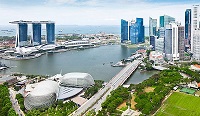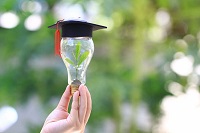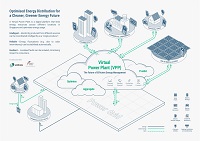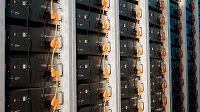Speeches
29 Oct 2025
- Good afternoon distinguished speakers, partners, and guests.
- On behalf of the Energy Market Authority, it is my pleasure to welcome you to SIEW TechTable 2025, “Transforming Energy Tomorrow, Scaling Solutions Today".
- We are meeting at a time of great global political uncertainty. When jobs, and supply chain security is at stake, it is not unreasonable to see climate action take a back seat. Despite these headwinds, the global clean energy sector is making good progress. In 2024, renewable energy capacity grew by more than 15%, reaching 4,448 gigawatts (GW), driven largely by solar and wind, according to the International Renewable Energy Agency (IRENA).
- This year, according to the World Energy Investment report, total investments across renewables, nuclear, grids, low-emission fuels, etcetera, are projected to hit US$2.2 trillion, reflecting strong momentum from both governments and private investors.
- In Asia, we are benefiting from the fruit of these investments. Technologies like wind, photovoltaics (PV), battery energy storage system (BESS) and electric vehicle (EV) are now mature and mainstream. Wind and solar generation capacity in China surged to 1,482 GW, exceeding fossil fuel-based thermal power capacity for the first time in March this year. Even in South-east Asia, a number of countries such as Thailand1 and Cambodia, we are seeing renewable energy costs comparable or lower than that of coal-generated energy. We are also seeing ambitions among Asian countries in the adoption of newer emerging technologies2, with plans to pilot and develop advanced geothermal, hydrogen and its derivatives and next generation nuclear reactors.
- So, what does this mean for Singapore’s Energy Transition?
- Singapore is fully committed to reach net-zero by 2050, but we must do so in a way that keeps energy affordable, reliable, and resilient for our people. To paraphrase Minister Dr Tan See Leng, “decarbonisation will come with costs, but cannot and will not be at all costs”
- 2050 is just 25 years away.
- For Singapore, standing here in 2025, this means that it is time to overcome initial barriers and move decisively on energy technologies that have entered the mainstream globally. This would be our approach for proven technologies such as solar, energy storage, and low-carbon electricity imports.
- Solar. Our solar strategy gives a sense of what I mean by moving decisively. Around the end of the last decade, it became clear that solar had reached price parity with conventional gas-fired CCGTs. Singapore’s approach to solar deployment was to act as a catalyst in its initial phase - we needed to make it worth the while for a solar industry to take root here. We mobilised all available public rooftops, including government buildings like schools and public housing where over 80% of Singaporeans live. This was a move that allowed us to scale up quickly and clearly signal our national intent on solar so that companies can marshal their resources accordingly. This effort paid off. Between 2020 and now, we quadrupled our solar capacity and would cross 1.7 GWp before the end of this year.
- We are fast running out of public rooftops! But our ambitions to maximise solar deployment in Singapore remain. We aim to expand across more public surfaces, private rooftops, and unconventional areas such as reservoirs, and even explore the potential of structural PV and solar canopies. This next phase would be a test of our readiness to innovate, adapt, and push the boundaries of what’s possible for solar deployment in Singapore.
- Electricity imports. Electricity imports are the next obvious mature sources. Singapore may be land scarce, but we sit in the centre of a region with over 20 terawatts of untapped solar and wind. There are islands south of Singapore, 40-100km away, that can provide approximately 4 GW, perhaps more, of BESS-firmed solar. If such resources exist in say, Oakland, it would already have been wired up to Cupertino. But they lie across international borders so there are real complexities such as regulatory and infrastructural coordination before these sources can be unlocked. That being said, we are moving strong in this area with Conditional Approvals and Conditional Licences awarded to around 8.3 gigawatts of capacity in total.
- Looking into the next bound, we have to start opening up options for all relevant energy pathways that make sense for us, such that when these technologies are mature and the price is right, Singapore will be able to move fast to get them scaled up. This does not mean that we are placing bets on every new technology. Instead, we are carefully assessing, testing, and building expertise in the most promising options. This will be our approach for the next generation of technologies, such as hydrogen, ammonia, advanced geothermal, and advanced nuclear.
- Hydrogen and its Derivatives. Hydrogen stands out as a potential scalable pathway, with several technological pathways – from liquid-based systems to metal oxide frameworks – all at different stages of maturity. Despite existing engineering and cost challenges, I remain hopeful in its long-term prospects as hydrogen produced from renewable sources ultimately is a manufactured product, and is made with the technologies that follow steep cost-reduction learning curves, just as we’ve seen in PV panels and batteries.
- We are willing to invest in readying ourselves to move fast on this. All new combined-cycle gas turbines (CCGTs) in Singapore are now required to be hydrogen-ready. Among the different hydrogen carriers, ammonia has an established supply chain. We plan to get a pathfinder project started to supply low carbon ammonia for maritime bunkering and power generation through direct combustion. Earlier this month, we appointed a consortium led by Keppel to take the lead for a pilot. If the pilot does proceed, it will very likely be the first of its kind for large-scale direct combustion of ammonia in a gas turbine.
- Geothermal. Turning to geothermal energy. It may sound like an unnatural choice for us as Singapore does not have accessible reservoirs of hot water or steam to go for conventional hydrothermal systems. But we might be sitting on hot but dry rocks that could be tapped on by advanced geothermal technologies such as enhanced- or closed-loop geothermal systems. Notwithstanding that these technologies are still not fully commercially ready, we are studying them closely. In parallel, we are also assessing the suitability of our geological conditions and understand implications of large-scale geothermal extraction amid our dense urban environment. Our approach remains measured, but once the technology demonstrates feasibility and safety for Singapore, we will be ready to act decisively.
- Nuclear. On nuclear energy, we are seeing a renaissance unfolding. Over 30 countries are now expanding or reembracing their nuclear programmes. Tech giants, to secure long-term carbon-free energy, are placing firm orders for next generation advanced or small modular reactors (or SMRs) that promise faster, safer and more flexible deployment. In particular, many SMRs are moving from concept to implementation. The Organisation for Economic Co-Operation and Development Nuclear Energy Agency (OECD-NEA) has identified 127 SMR designs globally, nearly half of which are already being reviewed by regulators for potential deployment. Some of these reactors are slated to start producing power on a commercial basis within this decade.
- Singapore is building the technical and regulatory capabilities to objectively and scientifically assess whether the advanced nuclear technologies and small modular reactors could be safely and effectively deployed here. We will also continue to strengthen our nuclear safety and radiation protection competencies to prepare for potential nuclear power deployment in the region.
- There are many other energy pathways that we are considering. Our mantra in Singapore with regards to new energy technology is that nothing is off the table, and we will always be on the hunt for all kinds of low-carbon energy, to continue to keep our options open. What’s important for us is that we must pursue a diversified portfolio of sustainable energy pathways to build the future we envision. It is unlikely that any single solution will suffice, just as there is no one-size-fits-all solution to decarbonisation. Some will also fall by the wayside due to cost, safety or scalability issues.
- We will hear from the speaks at this Techtable on the promise and challenges for the leading energy pathways. Without further ado, I look forward to learning from the engaging discussions ahead. My sincere thanks to all our moderators and speakers, and to 3M and Princeton Digital for sponsoring their sessions.
- Thank you.
Global Clean Energy Trends
Balancing Singapore’s Net Zero Ambition with Practicality
Singapore’s Approach to a Clean Energy Future
Closing Reflections















